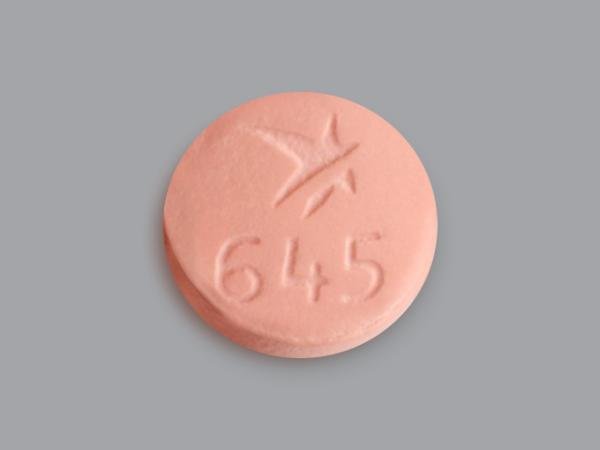Veozah Side Effects
Generic name: fezolinetant
Medically reviewed by Drugs.com. Last updated on Jan 13, 2025.
Note: This document provides detailed information about Veozah Side Effects associated with fezolinetant. Some dosage forms listed on this page may not apply specifically to the brand name Veozah.
Applies to fezolinetant: oral tablet.
Precautions
It is very important that your doctor check your progress at regular visits to make sure this medicine is working properly. Your doctor will do blood tests to check your liver before you start taking this medicine and at month 3, month 6, and month 9 after you start taking this medicine.
Do not use this medicine if you are also using cimetidine (Tagamet®), fluvoxamine (Luvox®), or mexiletine (Mexitil®).
Check with your doctor right away if you have nausea, pain in the upper stomach, vomiting, or yellow eyes or skin. These could be symptoms of a serious liver problem.
Serious side effects of Veozah
Along with its needed effects, fezolinetant (the active ingredient contained in Veozah) may cause some unwanted effects. Although not all of these side effects may occur, if they do occur they may need medical attention.
Check with your doctor immediately if any of the following side effects occur while taking fezolinetant:
Less common side effects
- dark urine
- feeling of warmth
- light-colored stools
- nausea
- redness of the face, neck, arms and occasionally, upper chest
- stomach pain
- sudden sweating
- vomiting
- yellow eyes or skin
Other side effects of Veozah
Some side effects of fezolinetant may occur that usually do not need medical attention. These side effects may go away during treatment as your body adjusts to the medicine. Also, your health care professional may be able to tell you about ways to prevent or reduce some of these side effects.
Check with your health care professional if any of the following side effects continue or are bothersome or if you have any questions about them:
See also:
For healthcare professionals
Applies to fezolinetant: oral tablet.
General adverse events
The most common adverse effects occurring in 2% of patients or greater include abdominal pain, diarrhea, insomnia, back pain, hot flush, and transaminase elevations.[Ref]
Cardiovascular
- Common (1% to 10%): Hot flush
Gastrointestinal
- Common (1% to 10%): Abdominal pain including upper and lower, diarrhea, nausea
Genitourinary
- Common (1% to 10%): Urinary tract infection
Hematologic
- Common (1% to 10%): Hemorrhage (uterine)
Hepatic
- Common (1% to 10%): Transaminase elevations
Postmarketing: Drug-induced liver injury/hepatotoxicity
Cases of serious drug-induced hepatotoxicity occurred within 40 days of starting treatment in the postmarketing period. Patients experienced elevated transaminases (up to 50 times the upper limit of normal [50 x ULN]), elevated alkaline phosphatase (up to 4 x ULN), and bilirubin (up to 5 x ULN) coupled with symptoms of fatigue, nausea, pruritus, jaundice, pale feces, and dark urine. After discontinuation treatment, these abnormalities gradually resolved.
Musculoskeletal
- Common (1% to 10%): Back pain, arthralgia
Nervous system
- Common (1% to 10%): Headache
Ocular
- Common (1% to 10%): Fatigue
Psychiatric
- Common (1% to 10%): Insomnia
Respiratory
- Common (1% to 10%): Nasopharyngitis, upper respiratory tract infection
References
1. (2024) "Product Information. Veoza (fezolinetant)." Astellas Pharma Australia Pty Ltd
2. (2025) "Product Information. Veoza (fezolinetant)." Astellas Pharma Ltd
3. (2024) "Product Information. Veozah (fezolinetant)." Astellas Pharma US, Inc
Frequently asked questions
More about Veozah (fezolinetant)
- Check interactions
- Compare alternatives
- Pricing & coupons
- Reviews (47)
- Drug images
- Latest FDA alerts (2)
- Dosage information
- Patient tips
- During pregnancy
- FDA approval history
- Drug class: miscellaneous central nervous system agents
- En español
Patient resources
Professional resources
Related treatment guides
Further information
Veozah side effects can vary depending on the individual. Always consult your healthcare provider to ensure the information displayed on this page applies to your personal circumstances.
Note: Medication side effects may be underreported. If you are experiencing side effects that are not listed, submit a report to the FDA by following this guide.

